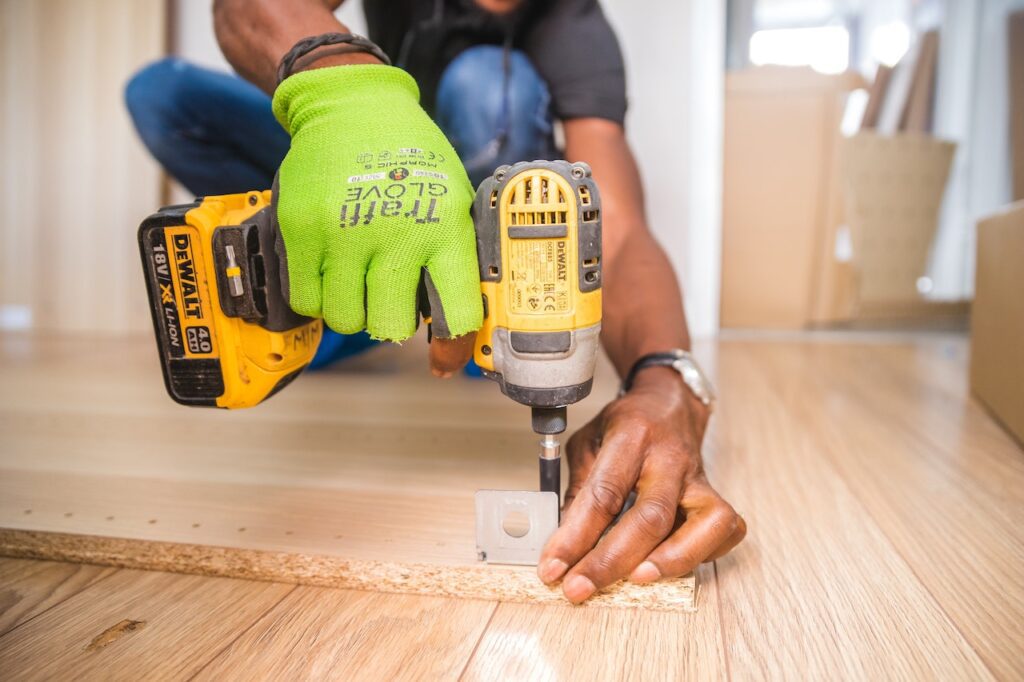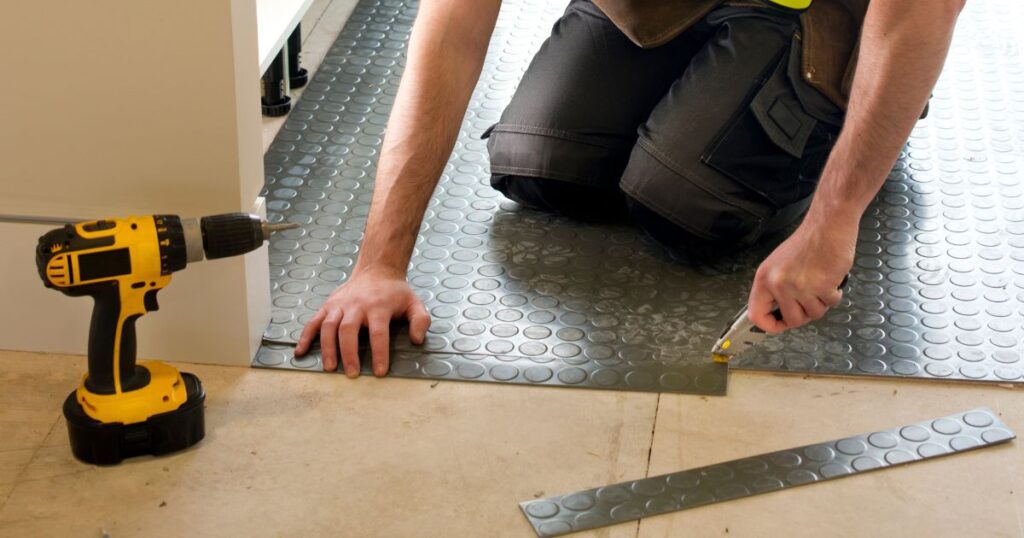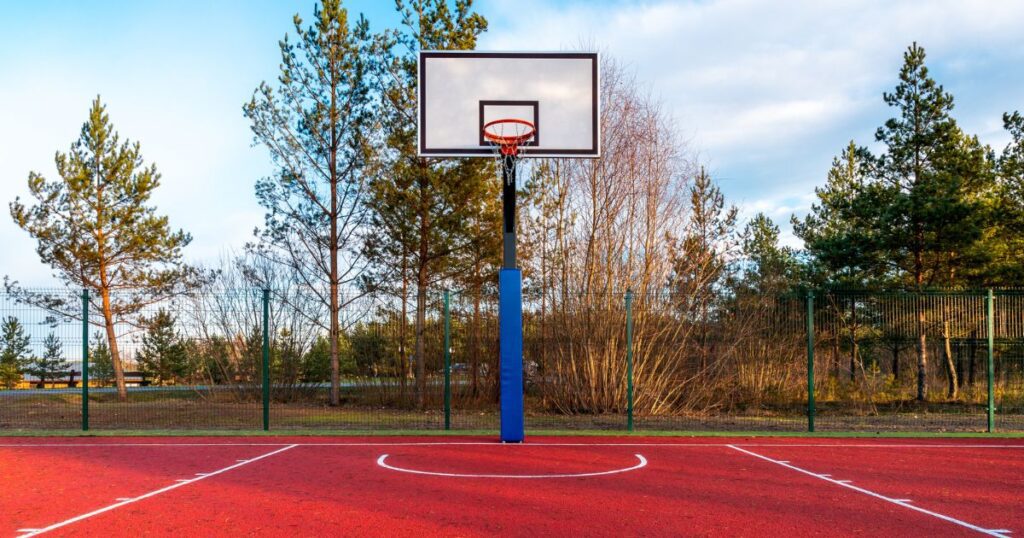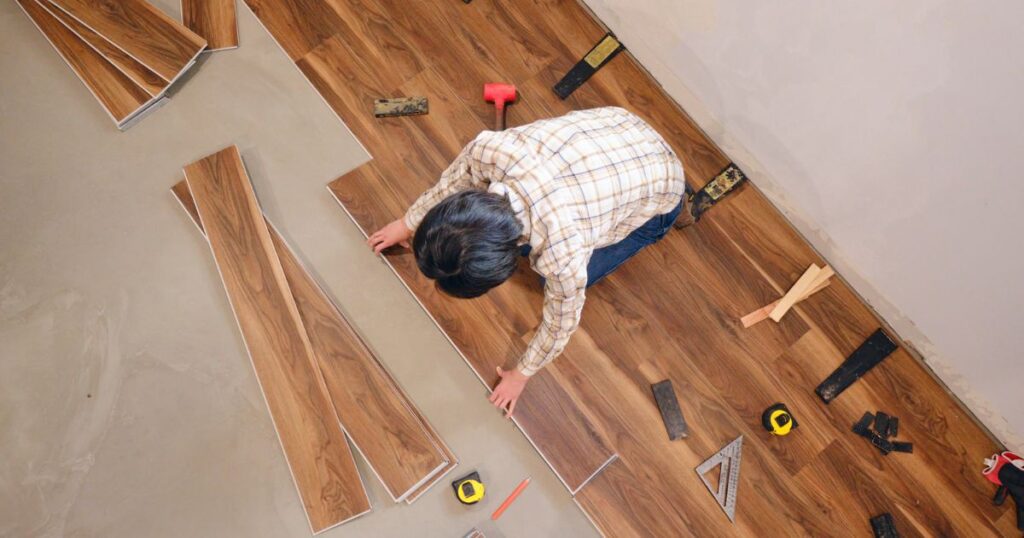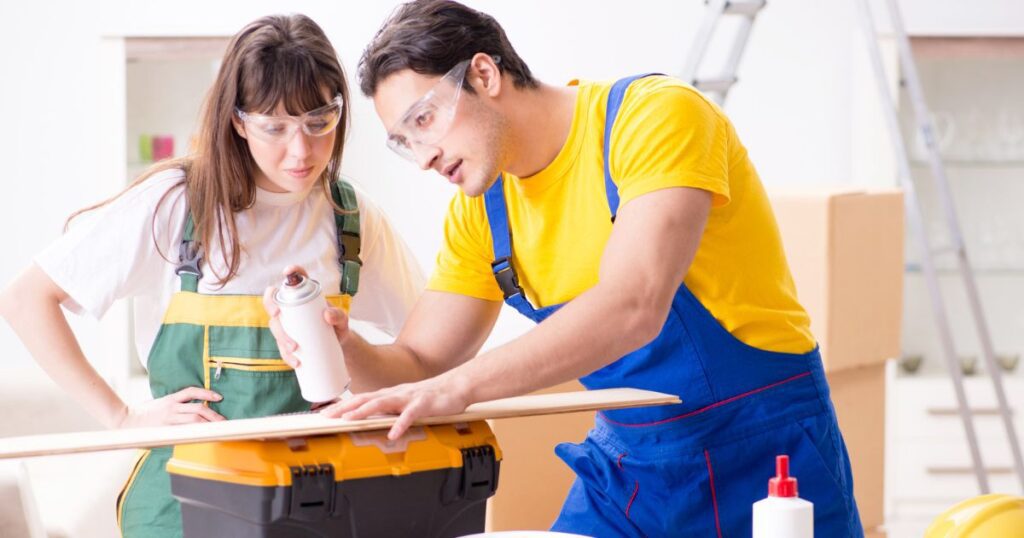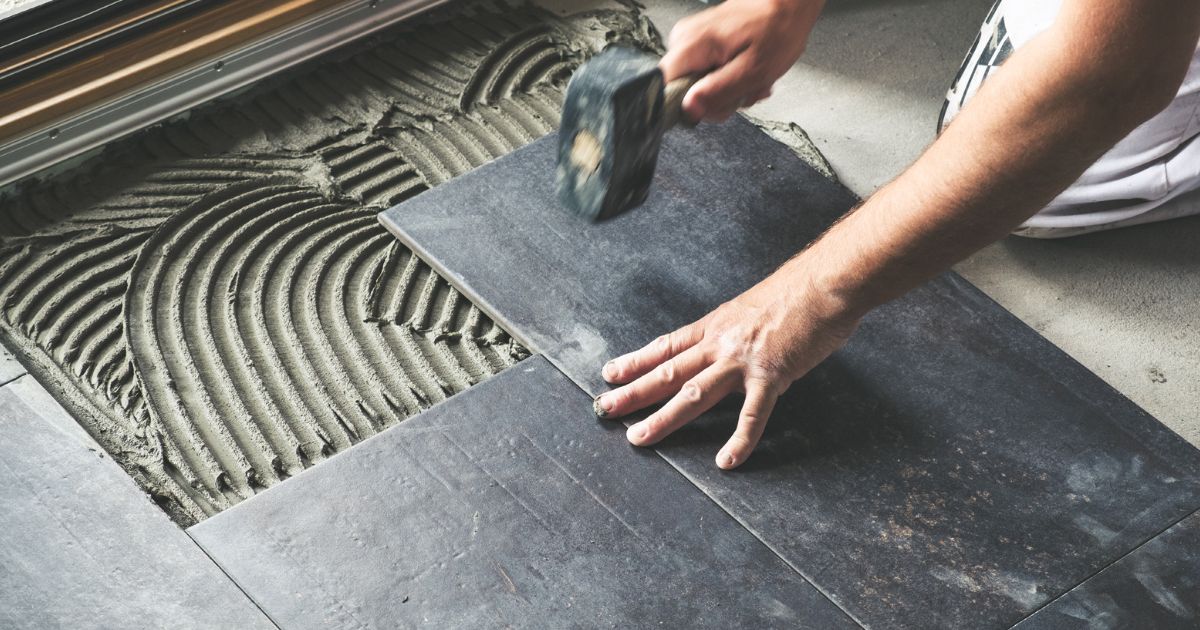
The Importance of Non Slip Bathroom Flooring for Elderly
Bathroom slips and falls are a leading cause of injuries among seniors, with many resulting in serious fractures that can significantly impact an individual’s quality of life. In fact, according to the Centers for Disease Control and Prevention (CDC), approximately 235,000 people over the age of 15 visit emergency rooms annually due to injuries sustained in the bathroom. As we age, our balance and mobility decrease, making us more vulnerable to accidents.
It is imperative that we take proactive measures to prevent these potentially life-altering incidents from occurring. One such measure is installing non-slip bathroom flooring.
This type of flooring provides traction and prevents slips by offering a textured surface that resists water and other wet substances present in bathrooms. With non-slip flooring underfoot, seniors can move around their bathrooms more confidently and safely without fear of slipping.
The Risks and Dangers of Slippery Bathroom Floors
Slippery bathroom floors pose a significant risk for elderly individuals who are already prone to falls. Bathrooms are typically small spaces with hard surfaces that become slick when wet due to showering or bathing. Water isn’t the only culprit – soap residue, shampoo, or even hairspray can leave behind a slippery film on floors increasing danger.
A slip-and-fall incident can result in severe consequences like head injuries or broken bones requiring hospitalization or physical therapy, which can be costly. Worse still is that sometimes seniors may lose their independence because they’re not able to recover fully from their injury after a fall.
RELATED: Do You Tip Wood Floor Installers?
The Need for Creative Solutions to Address This Issue
Though it seems like an obvious solution – using non-slip bathroom flooring – it’s surprising how few people actually make use of it. Some may be unaware of the dangers of slippery floors, while others may consider non-slip flooring too expensive or unattractive.
Yet, the cost of medical treatment and recovery from a fall is much higher than investing in preventative measures that reduce the risk of a fall. It’s time for creative solutions to be developed to address this issue.
Non-slip bathroom flooring comes in various materials and designs that cater to personal preferences while ensuring safety for all ages. It can even be designed to look like traditional hard surface floors, making it an attractive option for those who want functionality without sacrificing style.
Non-slip bathroom flooring is a necessity and not a luxury, particularly for seniors who are at an increased risk of slips and falls. Investing in non-slip bathroom flooring can prevent accidents before they happen and ultimately save individuals and families from emotional stress and financial burden from hospital bills later on.
High-level Overview of Non-Slip Bathroom Flooring Options
Traditional bathroom flooring options and their slip-resistance levels
Let’s get one thing straight: traditional bathroom flooring options are not suitable for the elderly. Ceramic tiles, marble, and hardwood floors have a high slip risk due to their smooth surfaces.
It’s reckless to assume that just because your bathroom has never been an issue before, it won’t become one in the future. You never know when a slip or fall will happen, and it’s better to be prepared than sorry.
Introduction to non-slip bathroom flooring options, including rubber, vinyl, and cork
Thankfully, there are several non-slip bathroom flooring options available on the market. The three most popular ones are rubber, vinyl, and cork. Rubber is a great option for those who want durability and aesthetic appeal.
Vinyl is ideal for those who need affordability with some added design benefits. Cork is perfect for people who want eco-friendliness without compromising on quality.
Pros and cons of each option
Rubber flooring may be durable and look fantastic in your bathroom, but it comes at a premium cost compared to other options, such as vinyl or cork. Installation can also be pricey due to its thickness requiring specialist fitting tools or adhesives. Vinyl is budget-friendly without sacrificing aesthetics as you have plenty of design options available, giving you freedom in choosing your pattern and color scheme matching any decor style you may have in mind; however, long-term durability can be an issue causing tears or scratches if misused.
Cork floors have eco-friendly benefits that make them perfect for those wanting environmentally conscious products; yet durability may also come up short with heavy foot traffic over time, wearing down its natural cushioning properties and leading to more wear-and-tear than other types of floors needing more frequent maintenance attention. Non-slip bathroom flooring options are varied, each with pros and cons.
It’s important to choose the right one that suits your needs, preferences, and budget. With a bit of research, you can find the perfect non-slip bathroom flooring option that’ll keep you safe and add value to your home.
Rubber Flooring: A Detailed Look
The Underrated Advantages of Rubber Flooring for the Elderly
When we talk about non-slip bathroom flooring, rubber is a material that is often overlooked. However, it’s an excellent choice for elderly individuals who need extra protection in the bathroom. One of the most significant advantages of rubber flooring is its shock-absorbing properties.
This makes it an ideal choice for those with arthritis or joint pain. Additionally, rubber flooring is naturally slip-resistant and durable, making it a perfect option for high-traffic areas like the bathroom.
Various Types of Rubber Flooring Available in the Market
Rubber comes in many forms, including tiles, sheets, and mats. Each type has its own unique properties and advantages that make them suitable for different needs and preferences.
For instance, tiles come in various colors and patterns that can match your decor while providing necessary slip resistance. Sheet rubber provides a seamless floor covering that’s easy to clean and maintain.
Installation Process and Maintenance Tips
The installation process of rubber flooring varies depending on the type you choose; however, most options are relatively easy to install with either adhesive or interlocking mechanisms. Once installed, maintaining your rubber floor requires little effort beyond regular sweeping or mopping with a mild cleaner.
Vinyl Flooring: A Comprehensive Guide
The Slip-Resistant Properties of Vinyl Flooring
Vinyl is another material option known for its slip-resistant properties that make it an excellent choice for non-slip bathroom flooring options for elderly individuals. Not only does vinyl provide excellent traction when wet, it’s also incredibly durable and long-lasting.
Cost-Effective Benefits for The Elderly Population
Vinyl flooring offers much value compared to other materials on the market due to its affordability. As an elderly person, you want a durable and safe bathroom floor without breaking the bank. Vinyl delivers on this by providing substantial cost savings without compromising on quality.
Design Options That Cater to Personal Preferences
Vinyl flooring comes in a wide range of designs that cater to personal preferences. You can choose from different colors and textures that will match your bathroom decor seamlessly. This allows you the chance to create a non-slip bathroom floor that is both aesthetically pleasing and functional.
Cork Flooring: An Eco-Friendly Alternative
Unique Slip-Resistant Properties of Cork Flooring
Cork is an eco-friendly flooring option with excellent slip-resistant properties; it’s made from the bark of cork trees found in Portugal, making it a sustainable choice for environmentally conscious homeowners. Moreover, the cork’s unique cellular structure allows it to be naturally slip-resistant due to its high coefficient of friction.
Benefits for Those With Allergies or Sensitivities
Individuals with allergies or sensitivities often have trouble finding suitable flooring options due to various irritants found in traditional options. However, cork flooring does not trap dust or allergens, making it an ideal choice for people dealing with health issues.
Durability and Maintenance Tips
Despite being a softer material than other options on this list, cork is surprisingly durable and long-lasting when correctly installed and maintained. To keep your cork floors looking their best, avoid using harsh cleaning chemicals that might damage the finish or cause discoloration; instead, use natural cleaners like vinegar or mild soap solutions when mopping or cleaning up spills. Non-slip bathroom flooring comes in many forms; however, rubber, vinyl, and cork stand out as excellent alternatives for elderly individuals seeking extra safety in their bathrooms.
Each type has its own unique advantages that cater to different preferences, making it easy to find the right fit for your needs. Whether you’re looking for an eco-friendly option or something that matches your decor, there’s a non-slip bathroom flooring option out there for you.
Rarely Known Small Details about Non-Slip Bathroom Flooring Options
The Importance of Choosing the Right Underlayment
When it comes to non-slip bathroom flooring, the underlayment is just as important as the surface material. It creates a smooth, level base for your flooring and prevents it from shifting or cracking over time.
For elderly individuals who require stability and balance in their daily activities, choosing the right underlayment can make all the difference. Look for an underlayment that is specifically designed to reduce slipping and sliding, such as a rubberized or cork-based product.
The Risks of Overestimating Slip Resistance Levels
Many people assume that any flooring marketed as “non-slip” will provide adequate protection against falls and slips. However, this is not always the case. Slip resistance levels can vary widely between different types of flooring and even within a single product line.
It’s important to read product specifications carefully before making a purchase and to test any new flooring thoroughly before installation. Overestimating slip resistance levels can lead to a false sense of security and put elderly individuals at risk.
RELATED: Flooring for the Golden Years: The Best Options for Senior Safety, Comfort, and Style
How to Test Slip Resistance Levels
There are several ways to test slip resistance levels in non-slip bathroom flooring options. One popular method involves using a tribometer or slip meter device, which measures frictional forces between two surfaces. Another option is the pendulum test method, which simulates walking on wet surfaces with a specialized machine that measures traction and slip resistance.
It’s also important to remember that slip resistance levels can change over time due to wear and tear or exposure to cleaning products. Regular testing and maintenance are essential for ensuring that your non-slip bathroom flooring remains safe and effective.
Frequently Asked Questions
What kind of flooring is safest for seniors?
For seniors, the safest flooring options are those that provide good traction and minimize the risk of slipping. Non-slip vinyl, rubber, or cork flooring are popular choice due to its slip-resistant properties.
What is the best non-slip tile for a bathroom floor?
When choosing non-slip tiles for a bathroom floor, look for options with a textured or matte finish, as they provide better traction. Porcelain or ceramic tiles with a high coefficient of friction, such as those with a slip-resistant rating, are recommended for bathroom floors.
What is the best flooring for accessible bathrooms?
The best flooring for accessible bathrooms typically includes non-slip surfaces and ease of mobility. Options like non-slip vinyl, rubber, or textured porcelain tiles are ideal as they offer traction and can accommodate mobility aids such as wheelchairs or walkers.
What floor material is not slippery?
Floor materials that are not slippery include non-slip vinyl, rubber, cork, or certain textured porcelain or ceramic tiles. These materials provide traction and reduce the risk of slipping.
How can I make my bathroom floor safe for elderly?
To make a bathroom floor safe for the elderly, consider installing non-slip flooring, using bath mats with non-slip backing, and ensuring proper lighting. Removing any rugs or obstacles that can cause tripping hazards is also important.
Which flooring is least slippery?
Flooring options with textured surfaces or non-slip properties are generally considered to be the least slippery. This includes materials like non-slip vinyl, rubber, cork, or tiles with a textured or matte finish, which provide better traction and reduce the risk of slipping.
Conclusion
Non-slip bathroom flooring options are an essential investment for elderly individuals and their caregivers. Choosing the right material, underlayment, and slip resistance level is crucial for reducing the risk of falls and injuries in the bathroom. By taking the time to research different products, test slip resistance levels, and prioritize safety over aesthetics or cost, you can create a bathroom environment that is both functional and safe for your loved ones.

